The mouthpiece is an important piece for sound production.
The tones can change depending on the type of mouthpiece.
What is a mouthpiece?
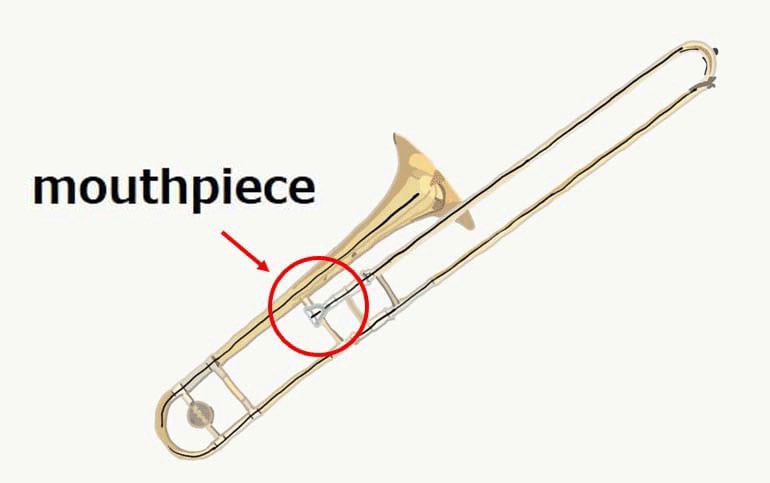
A mouthpiece is the piece that is attached to the trombone and is placed on the player’s lips (produces a sound).
Materials Used for the Mouthpiece
Generally, trombone mouthpieces are made of brass with silver or gold plating.
Some mouthpieces are made of plastic or other resins.
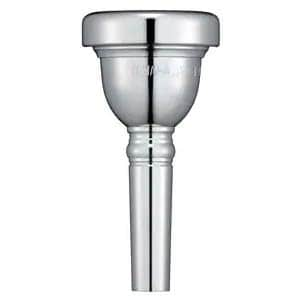
Brass plated with silver
Brass mouthpieces with silver plating are the most common. The sound is usually a little darker.
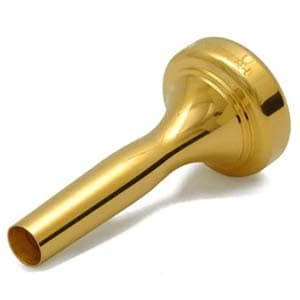
Brass plated with gold
Gold-plated mouthpieces feel very smooth on the lips. Although it may have a little more resistance than silver-plated mouthpieces, the smooth touch allows for more flexible lip control. These mouthpieces are usually made to be partially gold-plated and fully gold-plated.
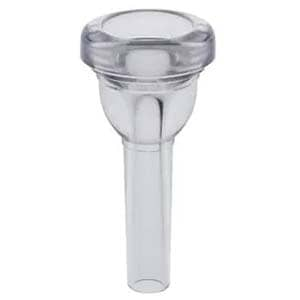
Plastic
Plastic (resin) is a lightweight and durable material. For practice use, some mouthpieces are made in clear colors to check embouchure, and some are colorful. These mouthpieces are a great option for people who are worried about metal allergies.
How to Choose a Trombone Mouthpiece
The most important thing to keep in mind when choosing a trombone mouthpiece is to choose a mouthpiece with the right shank.
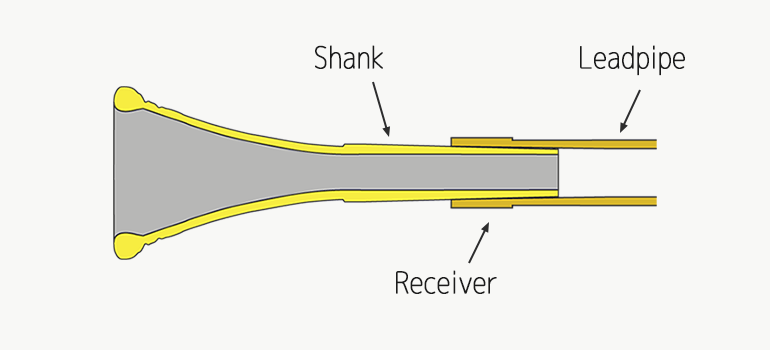 *The image is of a horn mouthpiece.
*The image is of a horn mouthpiece.What is a shank?
The shank is the long part that comes from the cup of the mouthpiece and is the part that is inserted into the instrument. The shank differs depending on thetype of instrument,so the shank with the correct size is an absolute must for your instrument.
’Large Shank’/’Small Shank’
There are mainly two types of shanks for trombone mouthpieces.
They are the ‘large shank’ and the ‘small shank’. The mouthpiece must be chosen depending on the bore size of the instrument. The bore refers to the diameter of the tube, and a large shank mouthpiece is used for a large tube instrument, while a small shank mouthpiece is used for a medium or small tube instrument.
| Mouthpiece | Bore | Features |
|---|---|---|
| Large shank | Large | Suitable for creating harmonies with rich volume in an ensemble. Often used in orchestras and wind bands. |
| Small shank | Medium | Between large and small tubes. Suitable for the first trombone part in an orchestra or for a brass band that requires a thicker sound. |
| Small | Produces bright and delicate high notes. Suitable for solo performance. Also favored by jazz and pop music players. |
Structure of the Trombone Mouthpiece
In addition to the material and shank, the most important factor that determines the tone and feel of a mouthpiece is the internal structure. A very small difference can make a big change in tone and feel.
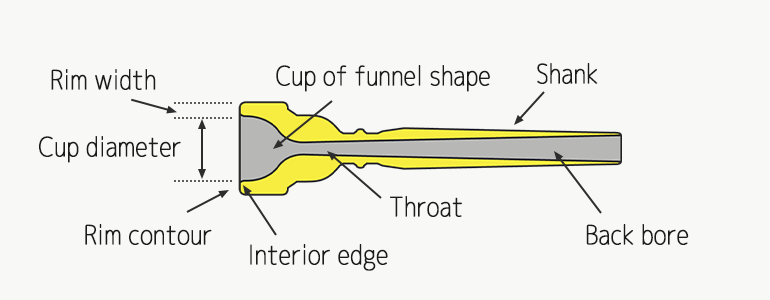 ※A trumpet mouthpiece.
※A trumpet mouthpiece.Cup Diameter
Depth of the Cup
| Shallow Cup | Deep Cup |
|---|---|
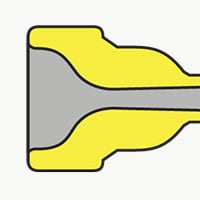 |
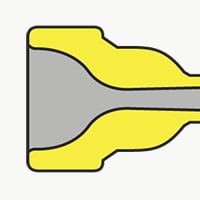 |
| Brighter tones and easier to produce high notes. Quieter volume. |
Darker tones and easier to produce lower notes. Louder volume. |
Shape of the Cup
There are two main types of cup shapes: ‘U shape’ and ‘V shape’.
| U-shaped | V-shaped |
|---|---|
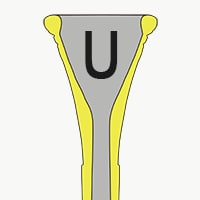 |
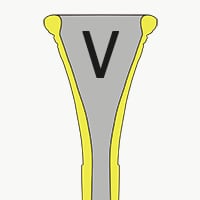 |
| Bright tone and produces high notes | Dark tone and produces low notes |
Rim Contour
The rim contour makes a big difference because it is where the player’s lips touch.
A thick or wide rim has a larger area making contact with the lips, which makes playing high notes easier for the player without becoming as tired. However, it also restricts the movement of the lips, which can make the lips lose flexibility.
A thinner and narrower rim offers more control and flexibility, but because they have less contact area, they can tire the player sooner from too much pressure.
Rim Bite
The rim bite mainly refers to the angle in the area from the rim to the cup. A mouthpiece with a sharp (steep) rim bite will give the player a precise, stable sound and a rich tone, but if the rim bite is too steep, it can interfere with lip flexibility and limit control.
On the other hand, a mouthpiece with a less edgy (round) rim bite sounds muffled at the beginning of the note and it’s difficult to keep the pitch.
Throat
The throat is the bottom of the cup, where it connects to the shank. It is the narrowest part of the mouthpiece bore. It greatly affects the sense of resistance when playing. A long, thin throat produces a bright tone with strong resistance and a sense of speed, making it easier for the player to produce high notes. A thicker, shorter throat produces a darker tone and louder volume, but has less resistance and tends to tire the player more easily.
Back Bore
The back bore is the part at the end of the throat. Like the throat, the thickness of the back bore changes the tone and resistance.
| Narrow | Wide |
|---|---|
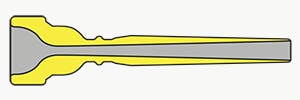 |
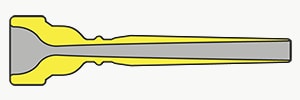 |
| Strong Resistance Bright tone with a sense of speed Easy to produce high notes |
Less resistance and less tiring Darker tone and louder volume |
Conclusion
In this article, we introduced a couple of mouthpieces that greatly affect the tone and playing feel of the trombone. In addition to the structure of the mouthpiece, various other factors such as the player’s teeth alignment, the shape of the lips, and the muscles of the mouth affect the response and tone. Of course, it is also important to choose a perfect mouthpiece for your instrument. Try out some different models and find the perfect mouthpiece for you.














